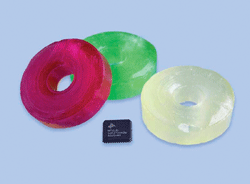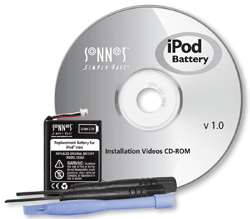Product Application Focus: Consumer Electronics
Consumer products will be the major growth drivers in years ahead. New innovations in gaming, entertainment, and wireless broadband will support this increase. Here is a sampling of components that are used in these products.
Entertainment
For today&'s video applications that require space efficiency, high performance, and design ease to speed time to market, Fairchild Semiconductor (South Portland, ME) offers the FMS6690/FMS6246/FMS6346 family of six-channel sixth-order filter/drivers that stands apart from competitive devices by allowing designers to select the combination of SD/PS/HD filters best suited to their system needs. To save space, each device integrates filters, input clamps, and fixed-gain (6-dB) output drivers into a 20-pin TSSOP.
Promising a better viewing experience at airline terminals, in display advertising, or in the home, Sharp (Osaka, Japan) has developed a display that can simultaneously show different information and image content in right and left views in a single unit by directionally controlling the viewing angle of the LCD. This feature makes it possible to provide information and content tailored to specific users depending on the angle at which they view the screen.
 Sharp's LCD simultaneously shows different information in right and left viewing directions.
Sharp's LCD simultaneously shows different information in right and left viewing directions.
Designed to meet the need for both audio quality and power savings for today's consumer audio products, including radios, mobile phones, and RF-transmitting portable players, the WM8985 codec from Wolfson Microelectronics (Edinburgh, U.K.) has an integrated dual-mode headphone driver to switch between class A/B to class D drivers. The device features a built-in audio-enhancement DSP for wind noise filter, notch filter, 5 Band EQ, and 3-D audio.
Based on the company's 897X platform, the codec supports up to two differential microphone and analog stereo line filters, enabling direct mixing from an FM radio, and has two pair of headphone drivers, enabling two users on one audio player. An integrated PLL supports input clock frequencies between 9 and 27 MHz.
Anticipating the massive technology transformation that will convert the North American TV market to all-digital broadcast, Microtune (Plano, TX) offers the MT2131 3-in-1 TV tuner, which promises to deliver TV reception for analog, digital, and cable broadcast and to ease DTV transition. The $3 part measures only 7 x 7 mm�shrinking tuner size by approximately 300% over traditional tuner cans.
 Microtune's MT2131 3-in-1 TV tuner
Microtune's MT2131 3-in-1 TV tuner
Gamers and multimedia enthusiast alike will be delighted by the Radeon X1900 graphics processor from ATI Technologies (Markham, Ontario). With the most advanced set of features, PCI Express add-in-cards based on this chip will, without question, be the cards of choice for gamers looking for the best performance and for multimedia enthusiasts looking for a high-performance high-quality digital media experience.
Personal communications
The USB On-The-Go specification address the growing need for portable devices such as phones, cameras, PDAs, and MP3 music players to communicate with each other, with limited host capability and low-power features. To address this, STMicroelectronics (Lexington, MA) integrates a complete USB-OTG module including a full-speed and low-speed transceiver, a USB-cable power supply with 100-mA capability, and a linear regulator. It also includes full support for popular memory-card interface, plus processor-supply monitoring and reset control.
 STMicroelectronics' USB-OTG module makes communication easier for portable multimedia systems.
STMicroelectronics' USB-OTG module makes communication easier for portable multimedia systems.
Longer listening
Sonnet Technologies (Irvine, CA) announced this past October a high-capacity iPod battery line that provides significantly longer play time and comes packaged with specialized tools and detailed installation instruction videos for easy battery replacement.
 Sonnet Technologies' iPod battery line
Sonnet Technologies' iPod battery line
The next big thing
Royal Philips Electronic (Eindhoven, The Netherlands) addresses VoIP technology with the PCD8072x family of cordless phone baseband chips that will allow consumers to use a cordless phone rather than a wired phone to make cheaper international and domestic calls over the Internet. This technology opens the door to other IP features, such as Internet call waiting, caller ID, and data links and also combines current cordless handset features such as color displays, with high-quality wideband voice functionality offered by IP telephony. The chips contain high-end ARM7 and DSP technology.
�Christina Nickolas
Advertisement





